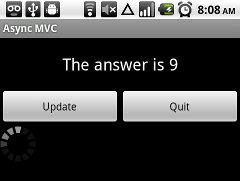Guys & Girls, all MTR readers – as you might have noticed, I haven’t been writing for MTR for a while already. So at this point, I would like to announce that I will no longer be able to write new articles for this blog any more.
MTR has been a successful project for me. I exchanged a lot of knowledge, found many friends all over the world and started my own cool Android project with a guy who I met here in this blog.
I am moving to a new exciting position in my company where I will need to keep focused on the higher level picture of IT trends, which includes the mobile world but is not limited to it. I am also highly devoted to my app, Su-Preme MPA, which is supposed to see its first full version released very soon. Thus, to avoid spreading myself too thin, I decided to cease my work on Mind The Robot.
However, this by no means should be the end of MTR itself!
First of all, I will keep the blog hosted and up and will try to answer your comments as often as I can.
Second, if you feel like writing an Android article for MTR, I will be happy to give you an account so you can post it. The blog currently has about 700-800 visits per day so your article will definitely be seen. Just contact me at ivan@mindtherobot.com.
Again, thanks for all your feedback, your comments and everything.
Sincerely yours,
Ivan @ MTR





